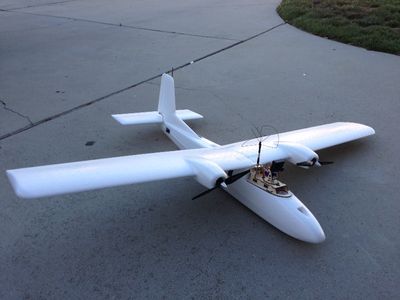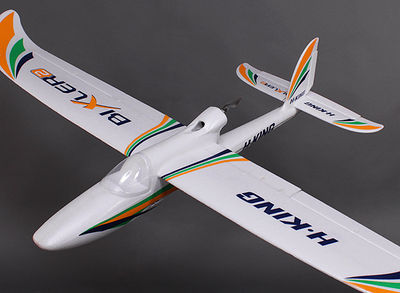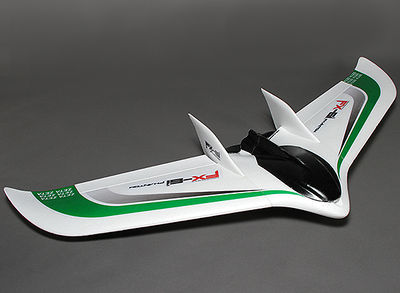1. Airplane
Contents
Airplanes
There are a Zillion choices but since this is a stage one set-up, we can narrow it down a bit. Most planes sutible for FPV will be made out of Foam and be relatively quick to assemble. Many even come with motor and servos pre installed but my recomendation is to stay away from this as the supplied gear is usually complete garbage and unreliable.
Foam Types
There are three common types of foam used in the construction of the airframe:
- EPP Foam - A relatively soft, flexible material which is nearly idestructable. You can use CA and Polyurethane (Gorrilla) glues but plastic glues such as Welders will attack this foam to some degree.
- EPO Foam - Much more dense than EPP and very tough, it is pretty glue safe and the best glue to use is Welders or Zap. CA glues are also very good, just not as flexible. Polyurethane does not bond with EPO although it will stick providing the surface is roughed up. I don't recoment Polyurethane.
- Elapor Faom - This is a very high-end product usually found on really expensive airframes. Welders, Zap and CA are the only glues that will work here.
- Elapor Faom - This is a very high-end product usually found on really expensive airframes. Welders, Zap and CA are the only glues that will work here.
Aircraft Types
Because FPV flying involves the use of forward facing cameras, most FPV airframes are set-up with either twin motors out on the wings or pusher style power arrangements. Here are some examples of three aircraft types:

|
| Multistar Twinstar II |

|
| The HK Bixler |

|
| The Zeta Phantom FX-61 |
The twin motor types are more expensive and require a bit more planning to get right. They also have a few more failure points which must be thought out.
The more conventional pusher types are the easiest to set-up and fly and generally are the most long lived! Usually very easy to hand launch and many have enormous payload capacity and size for all yor gear.
Wings are the most fun, easiest to transport and the most durable. They can be a challenge to launch depending on how much you load up on battery weight and some can be a handful to control at low speeds. They can also be challenging to fit all the gear you may want to use as they don't typically have a lot of internal space.
Motors, ESC and Prop
For Motor, ESC and Prop selection for any airframe, it is best to go to RCGrous.com, find build pages for the plane you are working on and post a question as to what has worked best. With few exceptions most model manuals will specify a motor which is undersized as the manufacturers usually don't take into account the added weight of FV gear and extra batteries Expect to get a lot of opinions, do some homework and make your selection!
Servos
Servos too can and should e researched a bit. Keep in mind it makes no sense to use cheap $4 servos on a lane you will be flying FPV because of the reliability issues this presents. Stick with name brands like Hitec, Corona or Futaba and you will be better off. It always makes sense to go with metal gear/ball bearing units.
Digital vs. Analog
There is no question digital servos, if well made, do a better job of centering and precision. They are also faster and generally roduce more torque for a given size. The bit you need to be careful of however is the noise issue that often haens with digitals. Many of these make far more electrical noise than their analog counterparts and the speed and torque advantage is usually not needed on an FV rig.
So, go with a name brand, metal gear, ball bearing, analog servo and you will have no issues here.
Flight Battery
Again, the best lace to go for info is build pages on RCGroups. Generally you will want a set-up that uses low 'C' lipo's like the HobbyKing Multistars because they are lighter than high 'C' units and you will be running parrallel packs so the high 'C' rating is not needed.
See Also
TBA